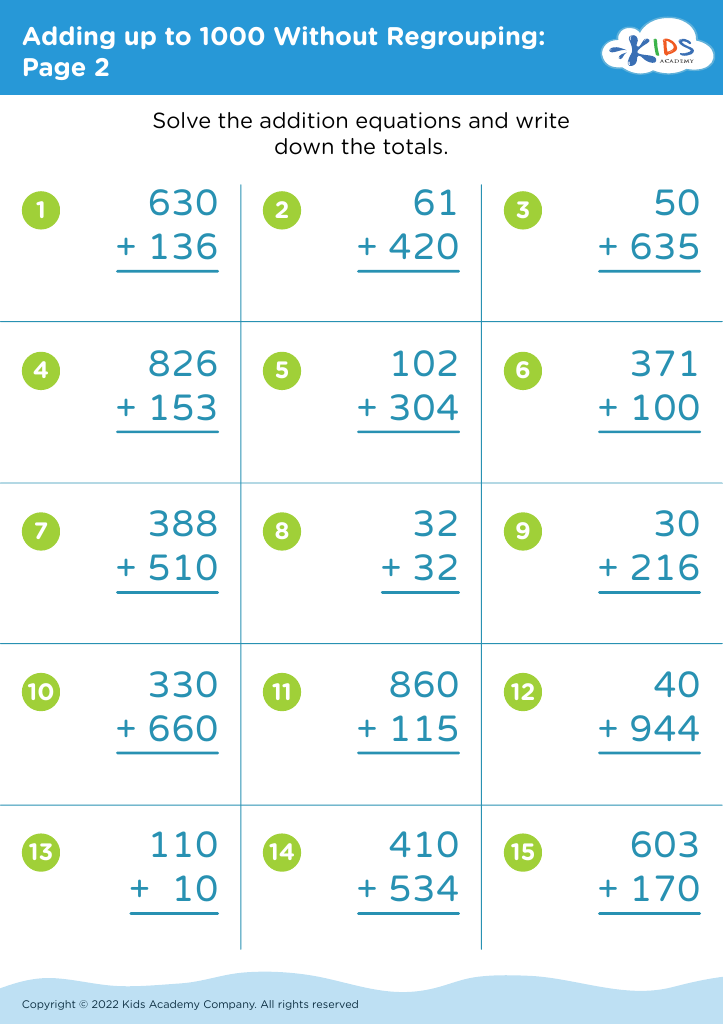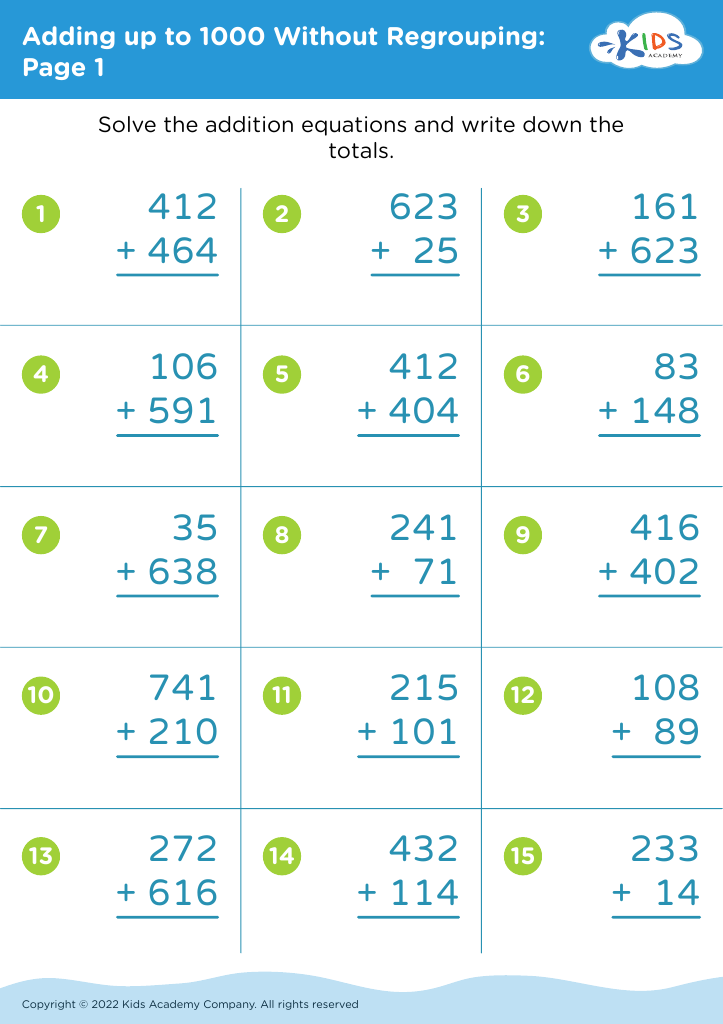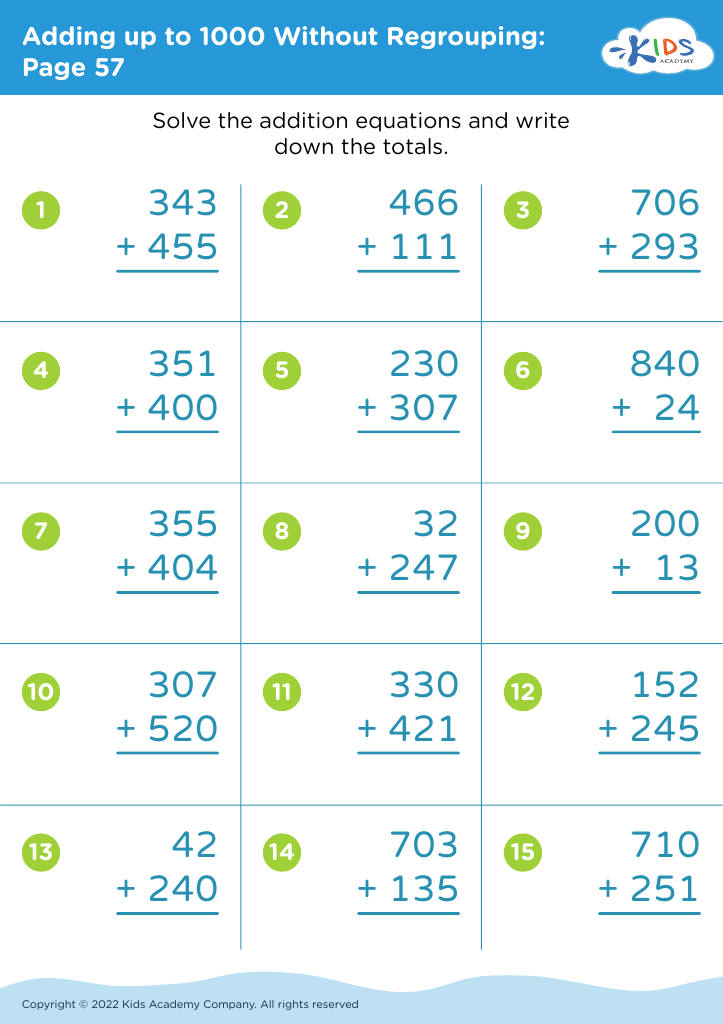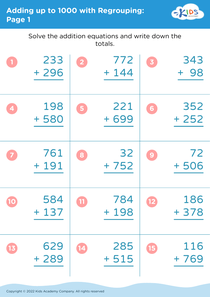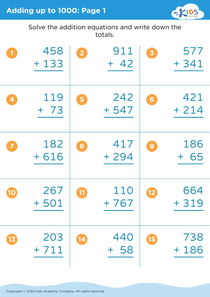Shape Recognition Adding up to 1000 Without Regrouping Worksheets for Ages 4-9
3 filtered results
-
From - To
Explore our engaging "Shape Recognition Adding up to 1000 Without Regrouping Worksheets" designed for children ages 4-9! These worksheets seamlessly integrate math and shape recognition, encouraging young learners to enhance their counting skills without the complexity of regrouping. Each activity features colorful shapes that captivate students' interest while providing essential practice in addition up to 1000. Perfect for classroom use or at-home learning, these worksheets help develop essential math skills while making learning fun. Foster a love for numbers and shapes in your child today with our expertly crafted, grade-level appropriate printables! Start their educational journey here!
Shape recognition and addition without regrouping are crucial skills for children ages 4-9, forming a foundational part of early math and cognitive development. Understanding shapes helps children identify and categorize objects in their environment, fostering spatial awareness and critical thinking. By recognizing shapes, children develop skills essential for geometry and problem-solving later in life.
Adding up to 1000 without regrouping, on the other hand, enhances numerical fluency, a key element of early mathematics. It promotes an understanding of number relationships and place value, enabling children to perform basic calculations confidently. Mastering this concept strengthens mental math skills, which are vital for more advanced operations as they progress in their education.
Both skills encourage logical thinking and decision-making. Moreover, when children learn to identify shapes and perform arithmetic properly, they build a solid foundation for future academic success. Parents and teachers play a critical role in this developmental process, providing opportunities for practice through fun activities and games. Engaging with these concepts not only supports curriculum standards but also nurtures a positive attitude toward math, enhancing a child's learning experience and fostering a lifelong interest in numeracy and geometry. This sets the stage for success in more complex mathematical concepts in later years.
